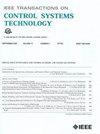Abstracted Model Reduction: A General Framework for Efficient Interconnected System Reduction
IF 3.9
2区 计算机科学
Q1 AUTOMATION & CONTROL SYSTEMS
引用次数: 0
Abstract
This article introduces the concept of abstracted model reduction: a framework to improve the tractability of structure-preserving methods for the complexity reduction of interconnected system models. To effectively reduce high-order, interconnected models, it is usually not sufficient to consider the subsystems separately. Instead, structure-preserving reduction methods should be employed, which consider the interconnected dynamics to select which subsystem dynamics to retain in reduction. However, structure-preserving methods are often not computationally tractable. To overcome this issue, we propose to connect each subsystem model to a low-order abstraction of its environment to reduce it both effectively and efficiently. By means of a high-fidelity structural dynamics model from the lithography industry, we show, on the one hand, significantly increased accuracy with respect to standard subsystem reduction and, on the other hand, similar accuracy to direct application of expensive structure-preserving methods, while significantly reducing computational cost. Furthermore, we formulate a systematic approach to automatically determine sufficient abstraction and reduction orders to preserve stability and guarantee a given frequency-dependent error specification. We apply this approach to the lithography equipment use case and show that the environment model can indeed be reduced by over 80% without significant loss in the accuracy of the reduced interconnected model.抽象模型约简:高效互联系统约简的通用框架
本文介绍了抽象模型约简的概念,这是一个框架,用于提高互连系统模型复杂性约简的结构保持方法的可追溯性。为了有效地减少高阶互连模型,单独考虑子系统通常是不够的。相反,应采用结构保留约简方法,该方法考虑相互关联的动力学来选择在约简中保留哪些子系统动力学。然而,保持结构的方法通常在计算上难以处理。为了克服这个问题,我们建议将每个子系统模型与其环境的低阶抽象连接起来,以有效地减少它。通过来自光刻行业的高保真结构动力学模型,我们显示,一方面,在标准子系统缩减方面显着提高了精度,另一方面,与直接应用昂贵的结构保留方法相似的精度,同时显着降低了计算成本。此外,我们制定了一个系统的方法来自动确定足够的抽象和约简顺序,以保持稳定性和保证给定的频率相关误差规格。我们将这种方法应用于光刻设备用例,并表明环境模型确实可以减少80%以上,而减少的互连模型的准确性不会有重大损失。
本文章由计算机程序翻译,如有差异,请以英文原文为准。
求助全文
约1分钟内获得全文
求助全文
来源期刊

IEEE Transactions on Control Systems Technology
工程技术-工程:电子与电气
CiteScore
10.70
自引率
2.10%
发文量
218
审稿时长
6.7 months
期刊介绍:
The IEEE Transactions on Control Systems Technology publishes high quality technical papers on technological advances in control engineering. The word technology is from the Greek technologia. The modern meaning is a scientific method to achieve a practical purpose. Control Systems Technology includes all aspects of control engineering needed to implement practical control systems, from analysis and design, through simulation and hardware. A primary purpose of the IEEE Transactions on Control Systems Technology is to have an archival publication which will bridge the gap between theory and practice. Papers are published in the IEEE Transactions on Control System Technology which disclose significant new knowledge, exploratory developments, or practical applications in all aspects of technology needed to implement control systems, from analysis and design through simulation, and hardware.
 求助内容:
求助内容: 应助结果提醒方式:
应助结果提醒方式:


